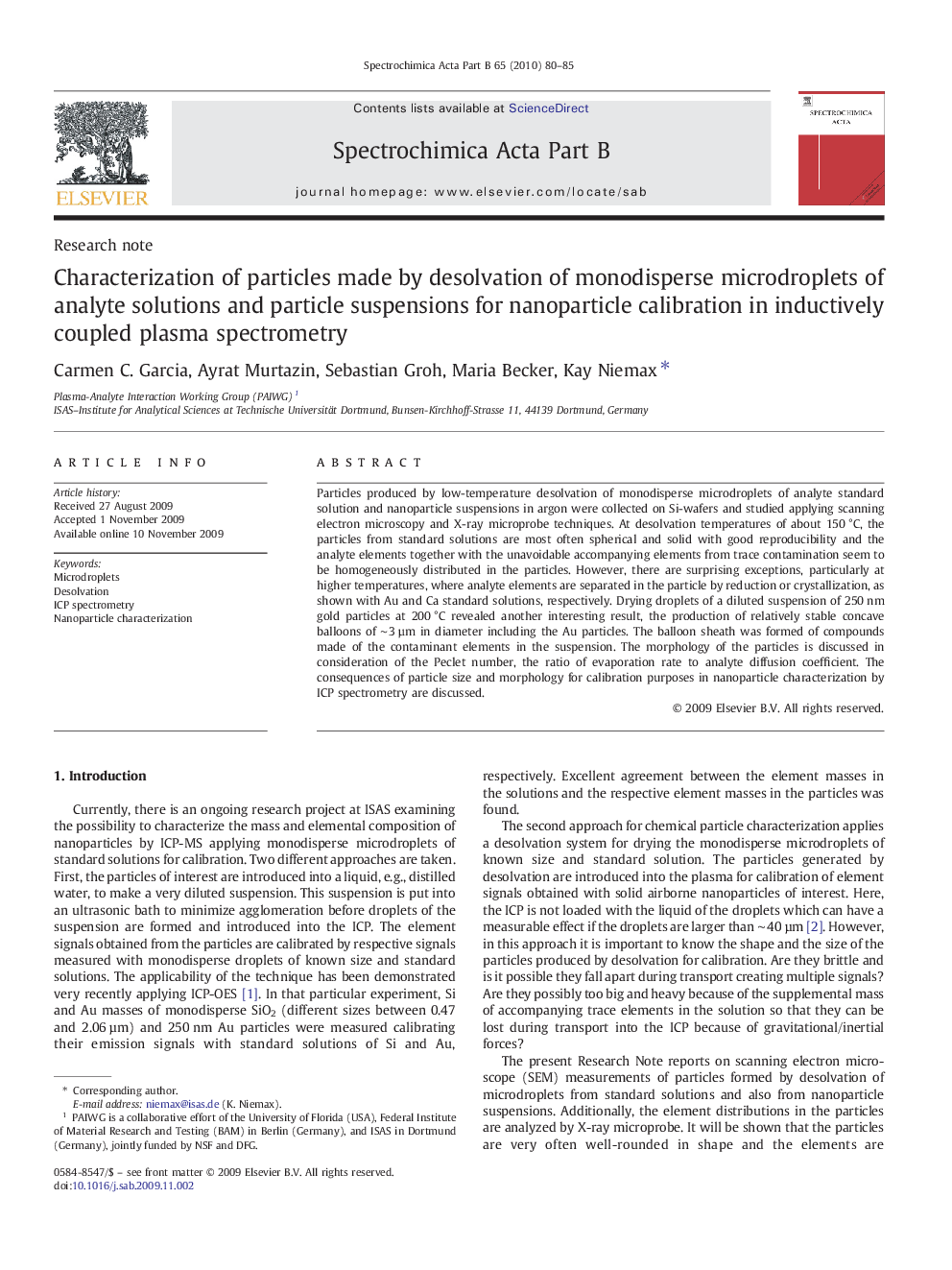| Article ID | Journal | Published Year | Pages | File Type |
|---|---|---|---|---|
| 1240624 | Spectrochimica Acta Part B: Atomic Spectroscopy | 2010 | 6 Pages |
Particles produced by low-temperature desolvation of monodisperse microdroplets of analyte standard solution and nanoparticle suspensions in argon were collected on Si-wafers and studied applying scanning electron microscopy and X-ray microprobe techniques. At desolvation temperatures of about 150 °C, the particles from standard solutions are most often spherical and solid with good reproducibility and the analyte elements together with the unavoidable accompanying elements from trace contamination seem to be homogeneously distributed in the particles. However, there are surprising exceptions, particularly at higher temperatures, where analyte elements are separated in the particle by reduction or crystallization, as shown with Au and Ca standard solutions, respectively. Drying droplets of a diluted suspension of 250 nm gold particles at 200 °C revealed another interesting result, the production of relatively stable concave balloons of ∼ 3 µm in diameter including the Au particles. The balloon sheath was formed of compounds made of the contaminant elements in the suspension. The morphology of the particles is discussed in consideration of the Peclet number, the ratio of evaporation rate to analyte diffusion coefficient. The consequences of particle size and morphology for calibration purposes in nanoparticle characterization by ICP spectrometry are discussed.
